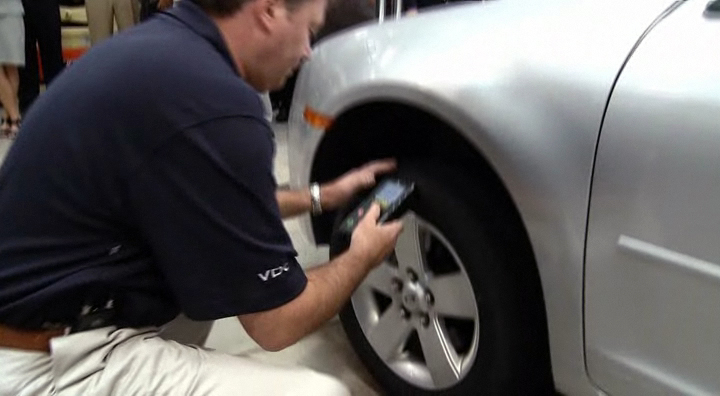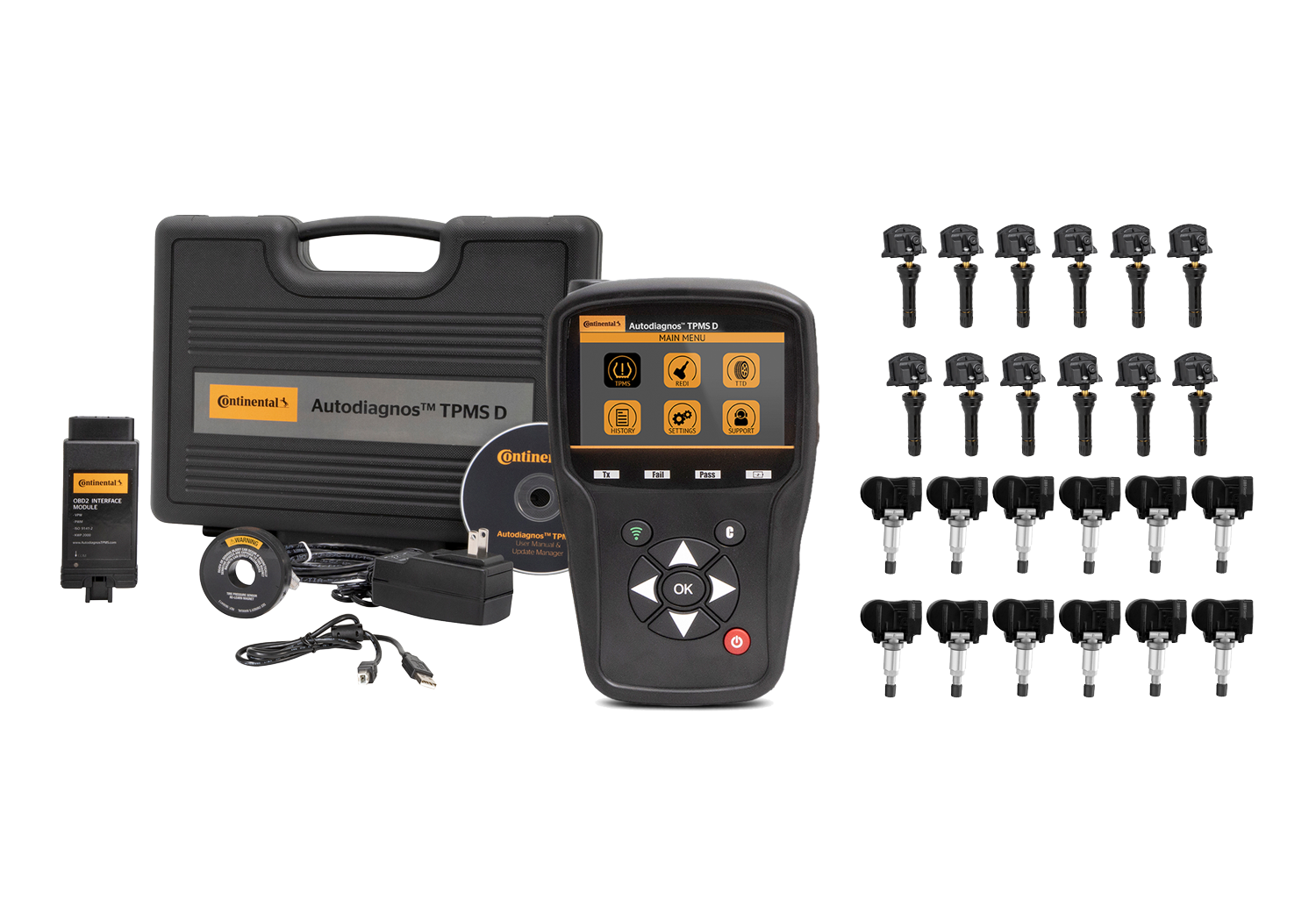Tire Pressure Monitoring Systems (TPMS) provide real safety and economy benefits for drivers. These systems have been mandated as standard equipment on all new light vehicles as of model year 2008. They are designed to monitor the air pressure in a tire and send a warning to the vehicle’s on-board monitoring system if the pressure drops 25% below the vehicle manufacturer’s recommended cold inflation tire pressure.
With over 80 million TPMS-equipped vehicles already on North American roads, and more coming off the line each day, the demand for TPMS sensor service is ever increasing. So, there’s a good chance that you’ll be seeing a fair share in your shop, if you haven’t already.
This new technology will help you to earn extra profits from parts sales and labor in a variety of tire service work, including: flat tire repair, mounting new tires, changing rims, sensor damage from road hazards or during tire service, or sensor battery failure. All of this work requires at least a TPMS service kit change, even if a full sensor replacement is unnecessary.

TPMS service requirements
It’s important to be aware of TPMS service requirements and the parts you’ll need to safely return the vehicle to the customer. Here are a few key points to remember:
- The TPMS sensor service kit parts need to be replaced during every tire service. The kit generally consists of a hex nut, grommet/seal, valve core and cap, but can vary by application.
- Only use TPMS-specific service kit parts. Never use a standard brass valve core in a TPMS sensor.
- Always use new TPMS service kit parts. Never reuse service parts that have been previously installed.
- Always use a torque tool to tighten sensor hex nuts or other threaded TPMS components to proper specifications.
- TPMS sensors only need to be replaced if damaged or if the battery is worn out.
- Check the spare tire to determine if it is TPMS-equipped and working properly.
- Replacement TPMS sensors must be relearned to the vehicle as directed by the vehicle manufacturer. A relearn may also be required after performing a tire rotation.

TPMS sensor types
There are several types available for service on today’s vehicles. Here is an overview on each:
• OE Replacement sensors – These are identical to the original equipment and pre-programmed for the vehicle.
• Programmable “universal” sensors – These aftermarket sensors come as blanks and require programming for the specific vehicle prior to installation. This is an additional step that requires a programming tool with specialized software.
•Multi-application / Multi-protocol sensors – These aftermarket sensors are pre-programmed for the vehicle and ready-to-use. No sensor programming is required.

The TPMS relearn procedure
The TPMS vehicle relearn procedure is a specific set of steps established by the vehicle manufacturer to activate and confirm the TPMS communication between the vehicle and the tire. A vehicle relearn has always been required during sensor replacement as well as other sensor or tire service work, regardless of the type of replacement sensor being used. Some vehicles relearn automatically when you drive them, while others require a TPMS scan tool to complete the relearn. This should not be confused with sensor programming whereby you program a blank “universal” sensor. Regardless of what type of replacement sensor you use, a vehicle relearn is always required.
